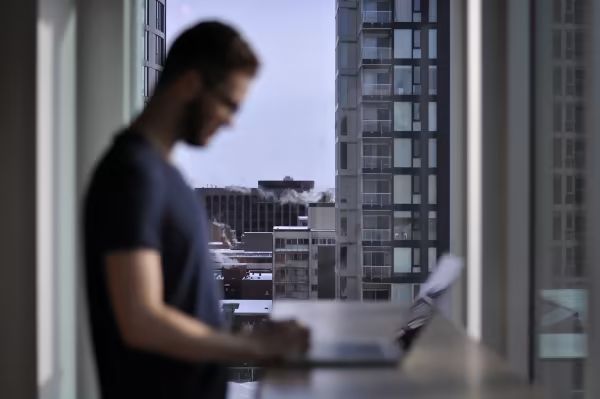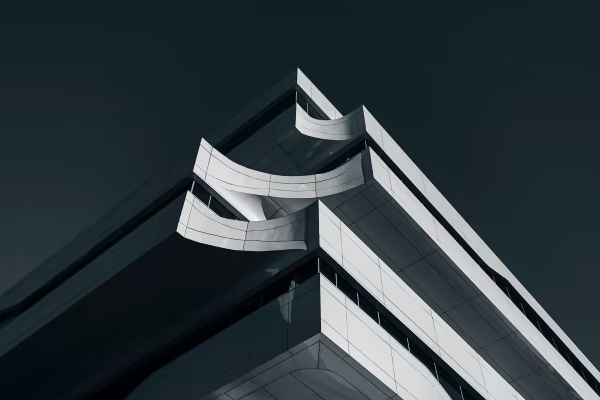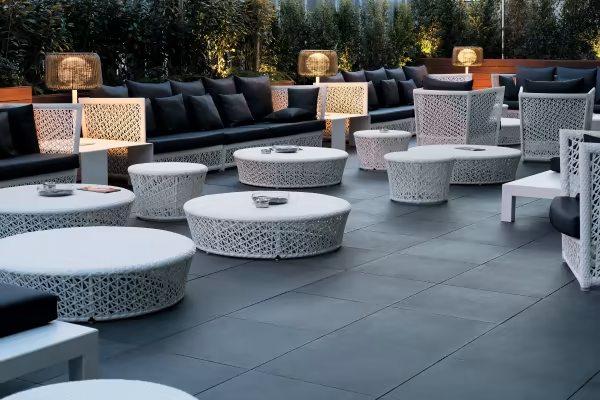Trend
Phygital spaces and global design
What happens when digital media design daily life?

Who would have imagined? They seemed so cute and helpless.
No, they’re not the opening words of a piece of pulp fiction, but the thought that all of us would have looking back to our first outings on the social networks and other digital platforms. They’re tools which were created and developed to enable us to communicate better, to knock down geographical barriers, to interact with everyone in the moment and in the place where we happen to be.

Let’s be clear: I don’t imagine a dystopic world where we as people are helpless and prey to machines (if, however, this theme appeals to you, try seeing The Social Dilemma, the new documentary broadcast on Netflix which is causing a stir ).
On the contrary, I try to see things with a critical (that is, analytical) eye, to try to understand how these digital solutions have made such a huge impact on our daily lives. We know, for example, that the image on the social networks is everything. One selfie leads to another, and very often we wait to do something, like eat in a restaurant, for example, until we’ve first been immortalised and shared the contents on the social networks. This effect has a well-known name in psychology:it’s called digital narcissism and consists in the projection of oneself into a virtual world.


What does all this have to do with the world of design and architecture?
The answer is a lot, and takes the name of “the instagrammability factor”. The choice of materials for interiors and exteriors is channelled by their impact “on the eyes” on Instagram, with paradoxical effects. Who knows what Simone da Orsenigo, the architect of the Milan Cathedral, would have said if we told him that at a distance of 600 years his treasure today risks being photographed less than Piazza Gae Aulenti precisely because of its light effects, reflections and textures that makes it super cool on the Instagram profiles of tourists from all over the world? You can have too much of a good thing, though: one thing is being photographed; another is being invaded. This was what the residents of Rue Crémieux, in Paris, thought. It’s a street which is so beautiful, charming and “Instagrammable” that it became overrun day and night with tourists, influencers and bloggers. It became so bad that the residents decided to ask the Paris Municipality to close the street in the late afternoon and at the weekend.

Talking of external spaces: the last few months have been very difficult. Not so much for the building sites, which, after a brief pause have carried on working, but for the perception of clients that these physical spaces are dangerous. Somewhere to stay clear of, or at least requiring great caution. Again, in this case, the digital platforms, from a simple tool, have transformed into something much more impacting.
I’m thinking of the use of Facetime, Zoom, Google Meet and other virtual meeting solutions, used by clients to visit houses, palaces and other spaces without being physically present. At first it seemed an innocuous trend, but it’s resisting well beyond the weeks of total closure, becoming accepted practice. After all, for a rich Chinese builder who wants to buy a house in London it means saving time and enormous resources.
What needs to be done, therefore? We need to equip ourselves, both in technological terms and in refining the techniques of virtual selling. Consider a psychological study (in 1967!), which found that 90% of the messages that we receive in face-to-face interaction comes through non-verbal communication, while only the remaining 10% from the actual content of the dialogue. Translate this proportion into a conference call interaction, and you understand how, in effect, all this technology will increasingly stimulate us to show our most empathic and human side.
So, am I persuading you of the growing influence that the social networks and platforms are having on daily design, and of the impact that they are having on our work? I’ll leave you with a couple of cherries on the cake that relate to Airbnb.
Do you know it? It’s the largest platform in the world of houses, apartments and other spaces rented out by private individuals, for other private individuals. It’s an enormous community that will not stop, that’s for sure, faithful to its promise to “create a world where all 7 billion people can belong anywhere”. If you know Airbnb, perhaps you don’t know, however, that, after having given life to and guided the revolution in home sharing, the company has begun to design homes and spaces through the new company division, Samara. The principle target of this design firm? Small and medium-sized cities that are suffering from falling populations because of urbanisation, to which to offer architecture and town planning services.
But where did this idea come from, and how can it be put into practice? The co-founder of Airbnb Joe Gebbia explains it very clearly:
“what excites me most is the fact of being able to apply what we’ve learnt in the last 8 years to create new types of business opportunities and a new social impact.”
In effect, who better than Airbnb, with millions of data collected over the years and a portfolio of deep and wide knowledge of the spaces that appeal most to people, to put itself forward as an ideal design and architecture partner? The project was soon up and running: a software company entering the physical world.
Another innovative idea launched by the platform is Backyard, “an initiative to prototype new ways that homes can be built and shared”. It’s a project that sees both the direct production and marketplace buying and selling of all that is necessary for constructing a dreamhouse not only for private individuals, but also for the whole community.
Platforms and social networks are, therefore, all-powerful. At a design and professional level this presents us with two challenges, with which I conclude my reflections. The first takes the name of “sameness”.
Digitalised or digital design, global by nature in both cases (the photos of anything on Google are seen by everyone, just as an iPhone or the home page of Facebook are identical both for an Italian client and for a Russian person) – has profoundly homogenised our taste, converging multitudes of people throughout the world towards a single idea and mental perception of layout. In actual fact, any representation of a contemporary architectural internal or external space, whether a shopping centre, a co-working office, or even simply a latest-generation block of flats, is more or less always the same.
Do we have to bend to this aesthetic, or do we still have the space in which to innovate and differentiate (uniqueness)?
Secondly, virtual dynamics have over time become not so much (or not only) real as, rather, “phygital”.
It’s a term that integrates “physical” and “digital”. Luciano Floridi, Italian Professor at Oxford University, talks, in fact, of our living OnLife. It’s the new existence in which the barrier between the real life and the virtual one has been removed, leading to another one…OnLife.
How to think about spaces in a world increasingly less physical or digital, but more phygital and OnLife?
Autor: Alberto Maestri
Photo credits: https://unsplash.com/